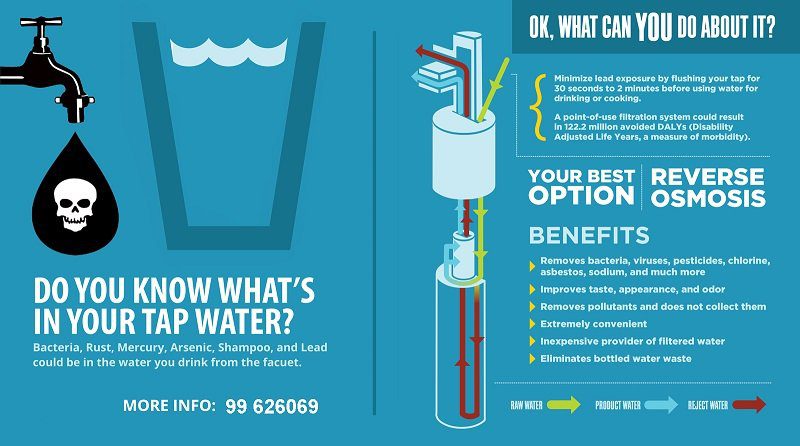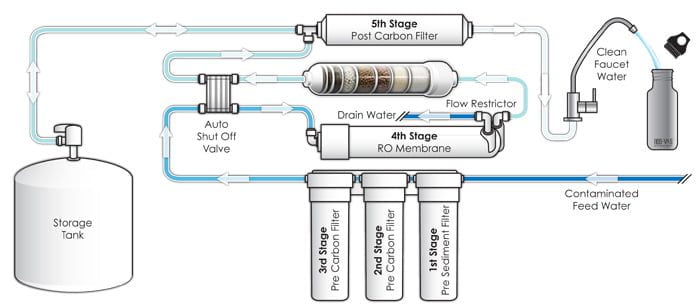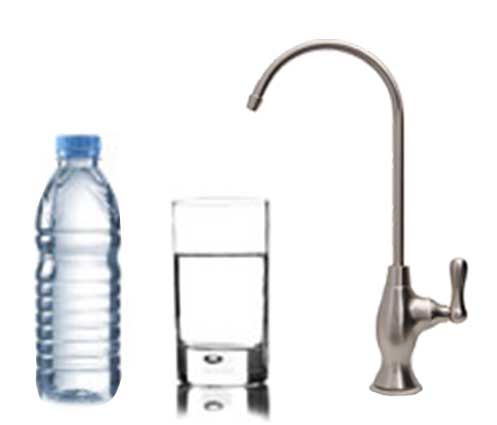Reverse Osmosis and Water Treatment.
When it comes to having clean, filtered water, there’s nothing like turning on your faucets to enjoy a refreshing water taste resulting from water filtering. One such type of filtering process is called the reverse osmosis water treatment.

This water treatment goes further than any other system for cleaning water, and you have the assurance of knowing that practically all contaminants and pollutants are gone from your water supply. Whether you are trying to compare the reverse osmosis water treatment with other kinds of water filters and cleaning processes, here are the basic steps you should consider.
The Cleaning Process
Like most water filters and cleaners, a reverse osmosis (RO) water treatment system has a sediment filter to trap particles and tiny pollutants. For example, calcium carbonate as well as rust are two particles which the sediment filter is designed to catch.

A second sediment filter is usually included with a RO system, however, and this second filter has smaller pores designed to trap and catch any other contaminants that passed through the first. In essence, the second filter continues to refine the water supply.
After two sediment filters are used, organic chemicals as well as chlorine are filtered out by an activated carbon filter. As a side note, these two chemicals must be filtered out in order to prevent damage to the membranes of the reverse osmosis water treatment system.
Following the activated carbon filter, the main RO filter is activated followed by two optional other systems: a second carbon filter and an ultra-violet lamp for disinfection. As you can see, water obtained from a reverse osmosis filter is thoroughly clean and ready to drink once the cleaning process has finished.
Reverse Osmosis Products
There are several types of reverse osmosis water treatment products on the market. Many reverse filter systems are placed in refrigerators as well as for commercial purposes, but personal ones also exist. For example, individuals who live in rural areas are able to buy portable RO filters to clean their water since these individuals typically live further away from a municipal’s or city’s water supply.
In addition, these water filters and purifiers are also used by the U.S. military to provide clean water for soldiers in battlefield zones and overseas.
Using Reverse Osmosis Filters in your Home
Perhaps one of the best steps you can take to enjoy the benefits and advantages of having clean water through a reverse osmosis water treatment systems is to install these devices in various places throughout your home.
For example, buying a refrigerator that contains a built-in RO filter or purchasing a replacement filter is certainly possible with waterfilternet.com. Standalone filter systems and bathroom shower RO filters also exist. All of these are practical ways to use these water purifiers throughout your home to enjoy clean water.
Overall, a reverse osmosis water treatment systems contain a more in-depth way of cleaning the water as opposed to regular purifiers that may use only one or two actual filters. Reverse osmosis systems remove not only chlorine, but large contaminant molecules and ions to give you a more clean, better-tasting water.
Reverse Osmosis used to Purify Drinking Water.
There are still many people flocking to the market to purchase bottled water for home use. It’s time to stop wasting money and time. Why? Because most of the bottled water manufacturers are just using reverse osmosis as means of purifying the bottled of water you are drinking. This is a fact that many people aren’t aware of it.
 Years ago RO equipment was only manufactured for household consumers. In now days, it has been used by major corporations for purifying non-potable water supplies throughout the whole world. It is also used on large military and commercial ships for purifying seawater for human consumption.
Years ago RO equipment was only manufactured for household consumers. In now days, it has been used by major corporations for purifying non-potable water supplies throughout the whole world. It is also used on large military and commercial ships for purifying seawater for human consumption.
Reverse Osmosis involves filtration but in a more complex way. People sometimes see it as a filter because it is much simpler to visualize. For example if you take a jar of water and put a semi –permeable membrane in it then divide the jar into two sections and place water on both sides of the membrane to an equal level, nothing will happen. But if salt is there into one side of the jar, you will soon notice that the water level in the salty side begins to rise higher as the unsalted side lowers. This scenario shows the natural osmotic pressure at work. This will continue until; the head pressure of the salt water overcomes the “osmotic” pressure created b the differences in the two solutions.
Is it safe to drink Reverse Osmosis water?
Reverse Osmosis drinking water is definitely safe to drink. Science explains why it is safe to drink this type of water compared to water containing high mineral TDS (Total Dissolved Solids). Water with high TDS actually becomes electrically charged and can conduct very small amounts of electric current. Reverse osmosis water with low TDS on the other hand is typically a solution lacking in hydrogen molecules. RO drinking water with TDS on the other and had much lower ability to conduct electrical charges. Typically reverse Osmosis drinking water has been scientifically proven to provide superior hydration at the cellular level.
Will the RO system remove the Chlorine?
A typical filtration system will give a nice tasting water but it will not remove Total Dissolves Solids like sodium, manganese, calcium carbonated just to name a few which are present in most typical tap and well water. Residential reverse osmosis drinking water on the other hand removes sediments and other solids followed by activated carbon adsorption in removing organic compounds such as chlorine, pesticides. So basically you will get a distilled water quality.
See our Reverse Osmosis products by clicking here.
Our Best Selling RO water filtration systems:
RO system VIDEO:
Here is a video of How the RO system works.
[1-click-image-ranker]
- How do you use SodaStream Duo – Step by Step Guide? - February 6, 2024
- Why Choose Tankless Systems? Discover the Best Tankless Reverse Osmosis Systems in Cyprus - December 18, 2023
- Comparison of Chlorine vs Chlorine Dioxide: Which is the Superior Sanitizer? - June 25, 2023
